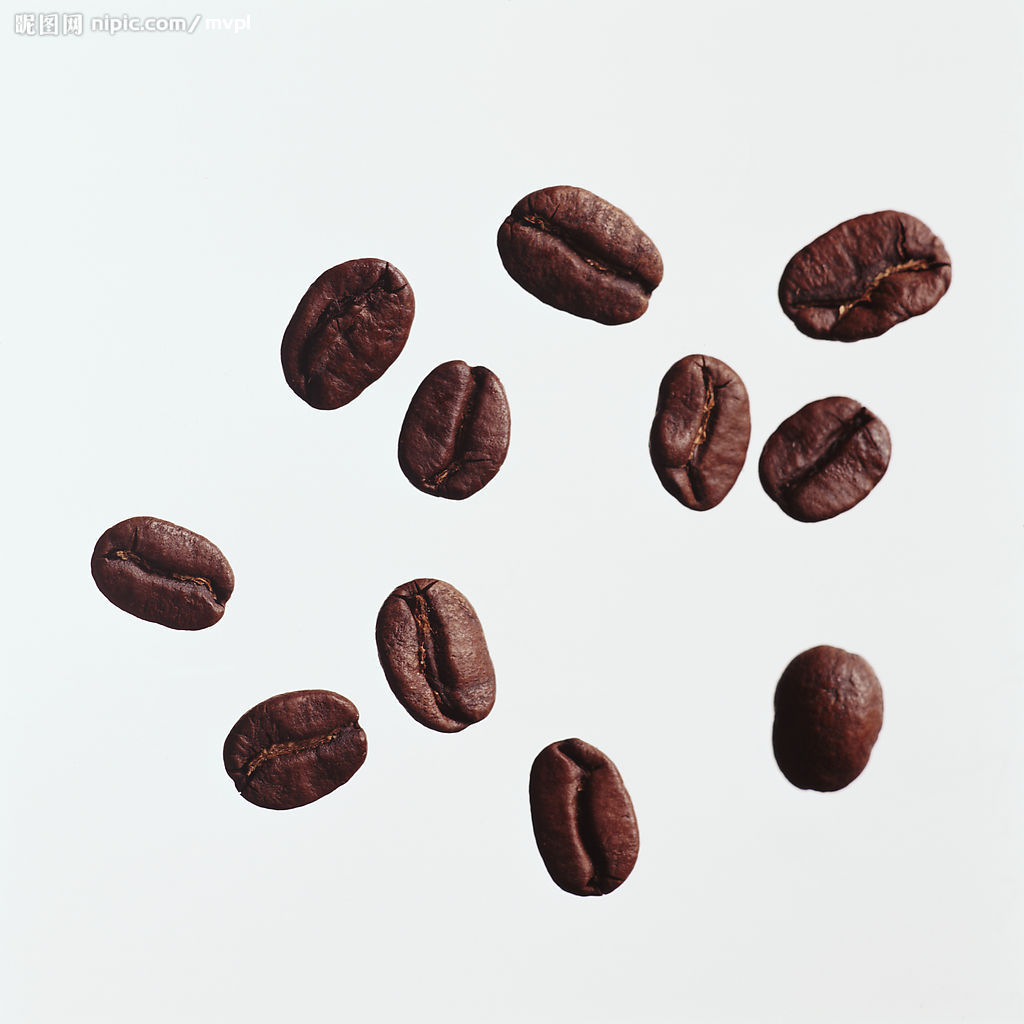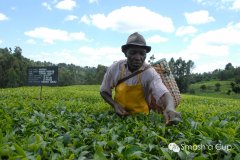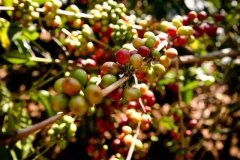Classification and causes of coffee defective beans all black beans SCAA grade worm-eaten beans
Boutique coffee is fresh coffee. Whether it's food or drink, of course, the fresh the better, and so is boutique coffee. High-quality coffee should keep the coffee beans fresh before making, including the preservation of baked beans, and grind the coffee beans into powder before making, which is also to retain its original and best flavor. The way of making hand-brewed coffee is such a way to make high-quality coffee, and it is also one of the coffee-making methods that can best retain the original flavor of coffee. Boutique coffee is good coffee and is harmless to health. Different from coffee made with low-quality coffee beans, high-quality coffee uses high-quality coffee beans and freshly made coffee, which is harmless to health, and drinking in moderation is beneficial to the body and mind.

Defective name: all black beans
SCAA level:
The all-black bean is a first-class defect.
1 obvious all-black bean = 1 complete defect
Name of defect: partial black bean
SCAA level:
Partial black bean is a secondary defect.
Less than half of 1 bean is black, 3 beans = 1 complete defect
Causes:
1) Agriculture: blackening is the result of excessive fermentation of pigments by microorganisms.
Precautionary measures:
1) Agriculture. Black beans can be prevented during picking, picking ripe fruits only from trees, and avoiding excessive fermentation during farm processing.
2) deal with. When the endocarp of the coffee bean is removed, the black bean is very obvious. They are usually small and low-density, and some can be removed through sieves and density classifiers. The most effective way to select black beans is through hand selection or color classifier.
Defective name: whole sour bean
SCAA level:
The whole sour bean is a first-class defect.
A whole sour bean = a complete flaw
Name of defect: local sour bean
SCAA level:
Local sour bean is a secondary defect.
Less than half of a bean is sour beans, 3 beans = 1 complete defect
Causes:
Agriculture and treatment. Sour beans are caused by fermentation, which is the result of contamination by microbacteria in many places in the process of harvest and treatment. Specific reasons include: picking overripe fruit, harvesting fallen fruit, water pollution during treatment, or excessive fermentation due to wet environment when the fruit is still attached to the tree.
Precautionary measures:
1) Agriculture: only pick ripe fruits (avoid overripe fruits), do not harvest fallen fruits, and do not grow coffee in low-altitude areas near rivers, lakes or dams to avoid over-fermenting coffee beans.
2) treatment: sour beans can be avoided by ensuring timely removal of pulp (immediately after picking to avoid delaying storage). When the whole water is washed, the fermentation time in the fermentation tank is controlled. Avoid pollution or recycling water in the process of washing out. Drying treatment should be completed in time and continuously. When coffee beans remove endocarp, sour beans are obvious, color classifiers and hand-selected classifiers can remove many parts of sour beans.
Defect name: mildew bean
SCAA level:
First-class flaw.
1 moldy bean = 1 complete defect
Causes:
Agriculture and treatment. Moldy beans are usually infected by Aspergillus and Penicillium fungi. Inappropriate temperature and humidity can cause Fusarium infection to coffee beans everywhere from picking to storage. It will induce mold growth. If mold spores appear, fungi will only grow under these conditions.
Precautionary measures:
1) Agriculture: coffee must be planted in producing areas with suitable temperature and humidity, this environment is also suitable for mold growth, and efforts must be made to inhibit the production of bacteria from mold sources. This includes harvesting fruits from the ground or severely moth-eaten, as well as coffee beans left in harvesting baskets and drying tanks.
2) treatment: good fresh fruit processing and shelling processing can prevent coffee infection. The causes of infection include coffee beans that break or break when the pulp is removed, leaving beans in the fermentation tank, delaying drying, interrupting the drying process, worming, and storing shelled beans in high humidity and high temperature.
3) Agronomy: only pick ripe fruits (avoid overripe fruits), do not harvest fallen fruits, and do not grow coffee in low-altitude areas near rivers, lakes or dams to avoid over-fermenting coffee beans. Moldy beans are obvious when coffee beans are shelled and endocarp removed. At this stage, the color classifier removes many parts of heavily moldy infected coffee beans, while slightly moldy beans can only be removed by hand.
Name of defect: foreign body
SCAA level:
First-class flaw.
1 foreign body = 1 complete defect
Causes:
Variety: foreign bodies can be produced in any process.
Precautionary measures:
1) Agriculture: none.
2) treatment: foreign bodies can be removed or avoided in the following ways:
Pay attention to branches and leaves when picking.
Pay attention to other substances, such as stones, sawdust, nails, etc., when drying in the sun.
In the shelling plant, use appropriate equipment, such as stone removers, magnets, to effectively remove foreign bodies.
Defective name: coffee dried fruit / dried pod
SCAA level:
First-class flaw.
1 dried fruit
Or dried pod = 1 complete defect
Causes:
1) Agriculture: drought and disease make the fruit dry on the trees and even fall to the ground.
2) treatment: in washed coffee, the presence of dried coffee fruits or dried pods is the result of a low-end pulp removal process and the failure of primary selection of floating beans (dried fruits) with water at the receiving station, and the equipment is not maintained or adjusted. In sun-treated coffee, the presence of dried fruits or pods is the result of inappropriate shelling and grading.
Precautionary measures:
1) Agriculture: avoid harvesting dried fruit from the ground or trees.
2) treatment: when there are too many dried fruits, the sheller can not be removed effectively. Removing all floating beans at the receiving station and maintaining the correct proofreading and maintenance of the pulp removal machine will reduce the production of dried fruit. Any dried pods that pass through the sheller can be selected and removed by a degree classifier during shelling processing.
Defective name: moth-eaten bean
SCAA level:
Serious borer bean is a first-class defect, 3 or more perforations
5 serious worm-eaten beans = 1 complete defect
SCAA level:
The pea is a secondary defect, with less than 3 perforations.
10 slight worm-eaten beans = 1 complete defect
Causes:
1) Agriculture: the berry bug is the most serious pest in coffee cultivation. The insect (coffee fruit bark beetle) pecks holes in coffee fruits and trees, digs channels in soft seeds and lays eggs. Newborn eggs usually appear from the other end, creating two holes in a coffee bean. It is not common to have multiple channels in a bean. The incidence of this disease often increases and decreases with altitude.
Important Notice :
前街咖啡 FrontStreet Coffee has moved to new addredd:
FrontStreet Coffee Address: 315,Donghua East Road,GuangZhou
Tel:020 38364473
- Prev

Ethiopian Coffee Cooperative Name and Introduction African Fine Coffee Aduoduo High Quality Cooperative
Fine coffee is fresh coffee. Whether it's food or drink, the fresher the better, and so is specialty coffee. Coffee beans should be kept fresh before making fine coffee, including the preservation of roasted beans, and the coffee beans should be ground before making, which is also to retain its most original and best flavor. And hand brewed coffee making is such a way to make fine coffee
- Next

What is coffee and beans? Coffee during soybeans cultivation English freshly roasted coffee beans preserve coffee
Boutique coffee is fresh coffee. Whether it's food or drink, of course, the fresh the better, and so is boutique coffee. High-quality coffee should keep the coffee beans fresh before making, including the preservation of baked beans, and grind the coffee beans into powder before making, which is also to retain its original and best flavor. And the way of making hand-made coffee is such a way to make high-quality coffee.
Related
- Beginners will see the "Coffee pull flower" guide!
- What is the difference between ice blog purified milk and ordinary milk coffee?
- Why is the Philippines the largest producer of crops in Liberia?
- For coffee extraction, should the fine powder be retained?
- How does extracted espresso fill pressed powder? How much strength does it take to press the powder?
- How to make jasmine cold extract coffee? Is the jasmine + latte good?
- Will this little toy really make the coffee taste better? How does Lily Drip affect coffee extraction?
- Will the action of slapping the filter cup also affect coffee extraction?
- What's the difference between powder-to-water ratio and powder-to-liquid ratio?
- What is the Ethiopian local species? What does it have to do with Heirloom native species?

